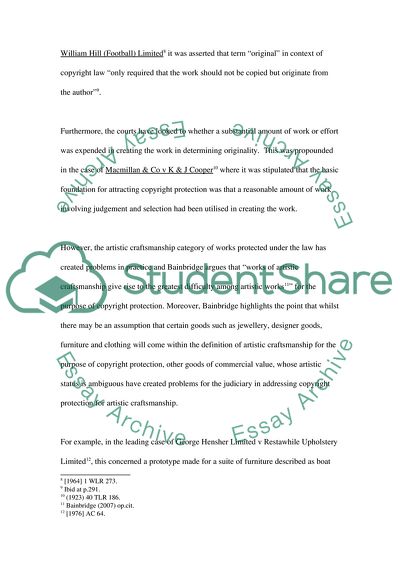Cite this document
(Artistic Works Term Paper Example | Topics and Well Written Essays - 2750 words, n.d.)
Artistic Works Term Paper Example | Topics and Well Written Essays - 2750 words. https://studentshare.org/visual-arts-film-studies/1721815-intellectual-property-artistic-craftmanship
Artistic Works Term Paper Example | Topics and Well Written Essays - 2750 words. https://studentshare.org/visual-arts-film-studies/1721815-intellectual-property-artistic-craftmanship
(Artistic Works Term Paper Example | Topics and Well Written Essays - 2750 Words)
Artistic Works Term Paper Example | Topics and Well Written Essays - 2750 Words. https://studentshare.org/visual-arts-film-studies/1721815-intellectual-property-artistic-craftmanship.
Artistic Works Term Paper Example | Topics and Well Written Essays - 2750 Words. https://studentshare.org/visual-arts-film-studies/1721815-intellectual-property-artistic-craftmanship.
“Artistic Works Term Paper Example | Topics and Well Written Essays - 2750 Words”. https://studentshare.org/visual-arts-film-studies/1721815-intellectual-property-artistic-craftmanship.


